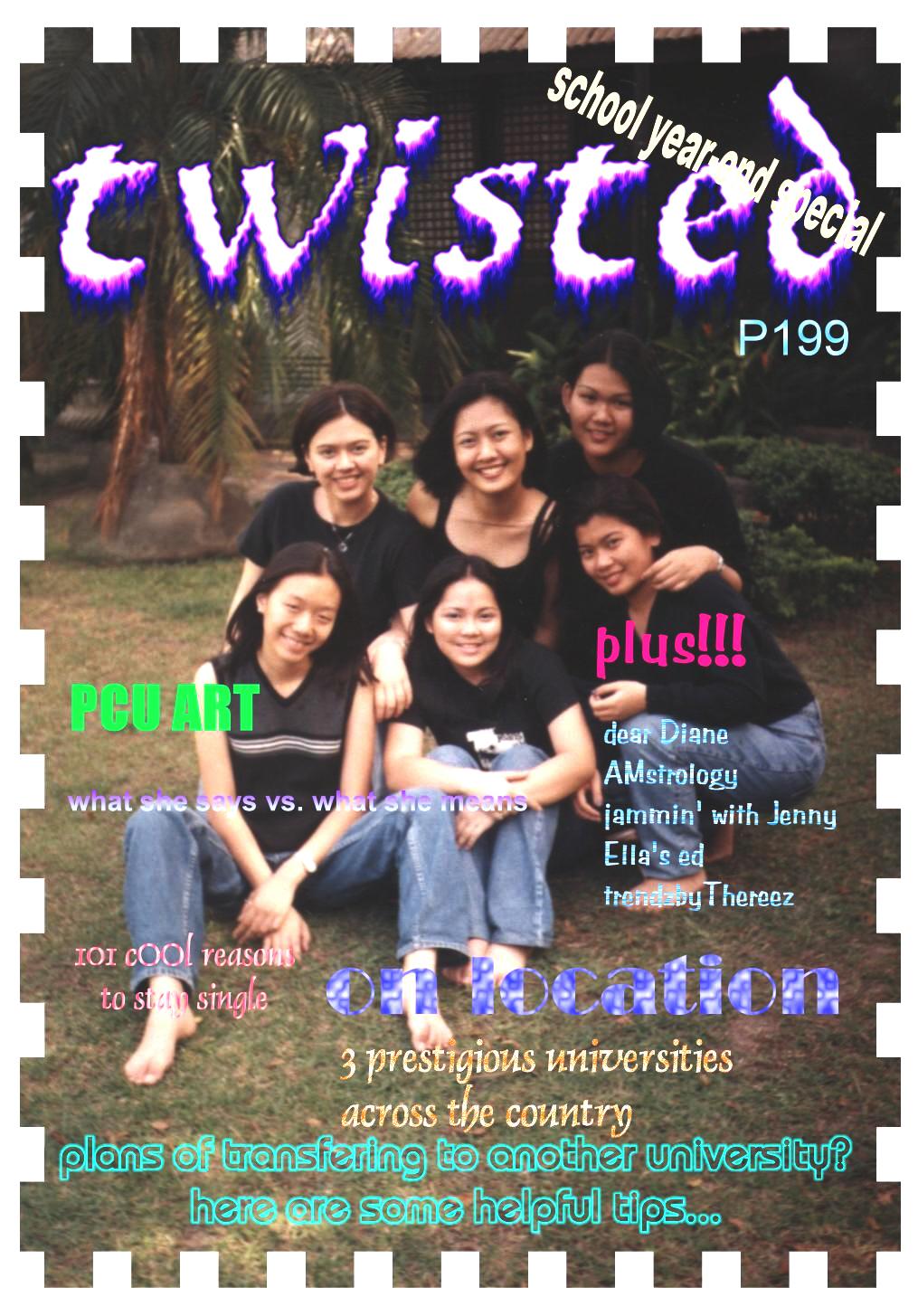
Ateneo de Manila University
 As a University, the Ateneo de Manila
seeks to preserve, to extend, and to communicate truth and apply it to the development of
the person and the preservation of his environment.
As a University, the Ateneo de Manila
seeks to preserve, to extend, and to communicate truth and apply it to the development of
the person and the preservation of his environment.
As a Filipino University, the Ateneo de Manila seeks to identify and enrich Philippine culture and to make it its own. Through the education of the whole person, the formation needed professionals and technologists, and through various corporate activities, the University aims to contribute to the development goals of the nation.
As a Catholic University, the Ateneo de Manila seeks to form persons who, following the teachings and examples of Christ, will devote their lives to the service of their fellowmen and, through the promotion of justice, serve especially those who are most in need of help: the poor and the powerless. Loyal to the teachings of the Catholic Church, the University seeks to serve the Faith and to interpret its teachings to modern Filipino society.
As a Jesuit University, the Ateneo de Manila seeks the goals of modern Jesuit liberal education through the harmonious development of moral and intellectual virtues. Imbued with the Ignatian spirit, the University aims to lead its students to see God in all things and to strive for the greater glory of God and the greater service of mankind.
The University seeks all these purposes and aims as an academic community, through the exercise of the functions proper to a university, that is, through teaching, research, and community service.
Degree Programs at the Ateneo
The College of Arts and Sciences offers programs leading to the degrees of Bachelor of Arts and of Science. Each program has two elements: the basic or core curriculum, which is essentially the same for all students because it constitutes an integrated program that the Ateneo conceives to be a truly liberal education; and the specific curriculum, which comprises specialized subjects carefully selected to provide the student with the best preparation.
The Core Curriculum
In order to provide the cultural training and intellectual discipline which should distinguish the graduate of a Liberal Arts college, all students take basic courses in language and literature, both in English and Filipino; mathematics and the natural and social sciences; philosophy and theology.
The Specific Curriculum
This element of the various programs provides a sequence of in which the student wishes to major. Usually, the field of concentration will involve introductory courses in either the freshman or sophomore year. These courses, however, are kept at a minimum in order to allow flexibility so that the student can shift to another major with the least loss of time and units.
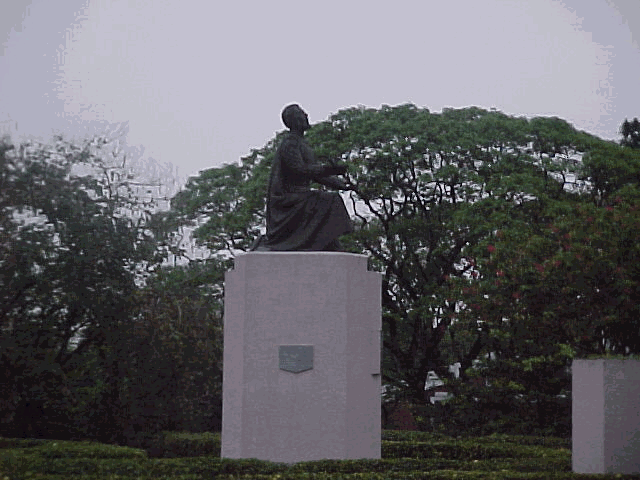 Resident
students
Resident
students
Cervini and Eliazo Halls form an integral part of the Ateneo Christian Community. They serve as a second home for provincial college students. In this regard there are dorm prefects who serve as their guardians, academic counsellors, and implementors of dorm rules and regulations. (from the Ateneo de Manila Brochure)
Cervini and Eliazo Residence Halls
Cervini and Eliazo Halls are dormitories for college students. They are conveniently located inside the large and hilly campus of the Ateneo de Manila University. Cervini can accommodate 204 male students while Eliazo can house a total of 160 female.
Facilities
The Residence Halls provide the following facilities: individual beds and mattresses, cabinets, study tables and book shelves, air-conditioned study rooms; recreation and TV rooms; swimming pool; cafeteria; and chapel.
There are two dorm guards in the evening to provide security for all dormers. (from ADMU University)
De La Salle University Like a dream. You can’t help but be awed by the imposing Corinthian columns and carved balustrades built in a U-shaped edifice representing a neo-colonial fa�ade that is the St. La Salle Hall. But the majestic beauty doesn’t stop in this building. It is mirrored on the eight other buildings inside the campus: St. Joseph Hall, Connon Hall, St. Miguel Hall, William Hall, the University Library, Velasco Hall, Gokongwei Hall, and the Science and Technology Research Center.
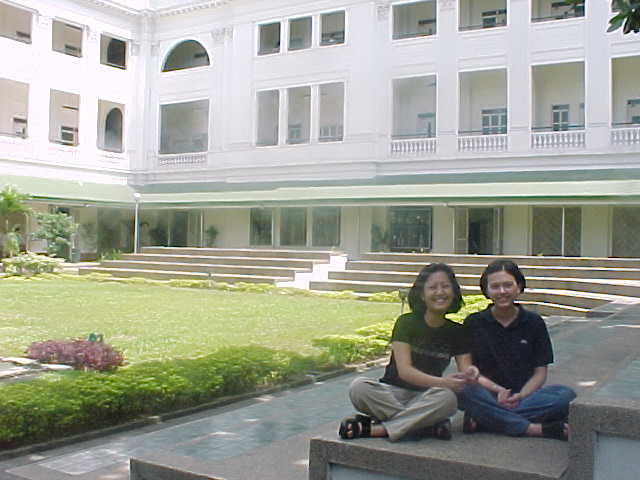
At De La Salle, you don’t get quality education just with first rate professors but with first class facilities as well. You have well-lighted classrooms, a large football field, a newly-renovated gym, cemented basketball courts, three spacious canteens, a covered walk spanning the three main gates of the campus, conservatory among others. There’s ample room for extra-curricular activities.
Other facilities include seminar rooms, audio-visual rooms, and auditoriums where students can invite guest speakers or hold their general assemblies or other events. We have the Ariston Estrada, Tereso Lara, Waldo Perfecto, and the Intelellect seminar rooms. There’s also the Pablo Nicholas Auditorium and William Shaw Little Theater (where theatrical and other artistic performances are held). For exhibits, displays, awarding ceremonies, and other student functions like bazaars, job fairs, ticket selling, meeting de avance, cultural performances, and discount card distributions, we have the Student Plaza, the Chess Plaza, the SJ Lobby, the Marian Quadrangle, and the Amphitheater. The sports-minded Lasallian can play different sports in the volleyball, basketball, lawn tennis, and table tennis courts. Not to mention the very large football field and the Bro. Athanasius gym where all types of sports and physical education activities can be held. The students at designated places may avail of sporting equipment.
Related to academic pursuits, the University boasts of its state-of-the-art computer facilities. There are also the science laboratories with modem equipment and numerous scientific collections, the engineering laboratories, the cognitive psychology laboratory among others.
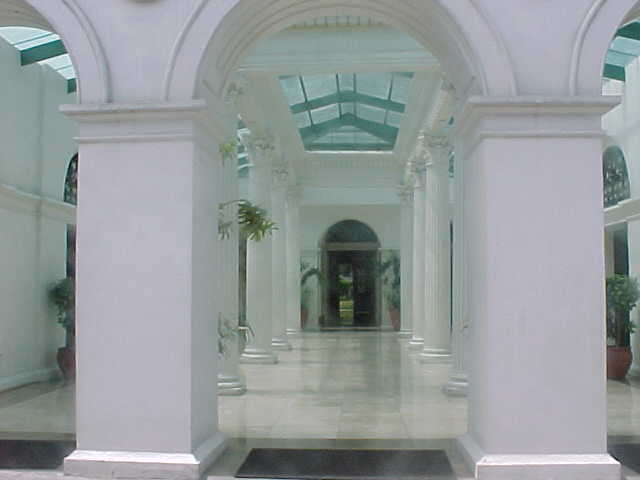
UP Manila
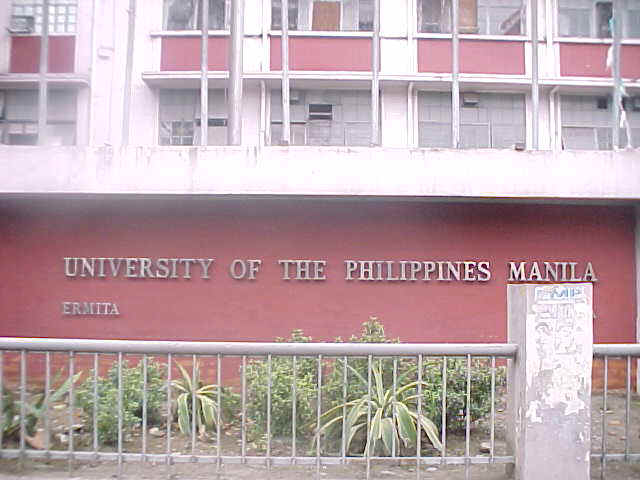
The UP Manila campus presently occupies an area of 14 hectares of prime land, approximately two blocks in Manila’s Ermita district. It is bounded on the east by Jose Diokno Avennue (still referred to as Taft), United Nations Avenue to the North; Maria Orosa Steet to the West and Pedro Gil Street (formerly Herrran) to the South. This is aside from the School of Health Sciences (SHS) campus in Palo, Leyte.
These are the important landmarks within the campus and its vicinity.
Rizal Hall houses the College of Arts and Sciences. Most classes of freshmen are scheduled here. Rizal Hall has recently constructed an annex located at the back of the building, the Gusaling Andres Bonifacio (GAB).
The Philippine General Hospital, or PGH, is the training hospital and the largest unit of UP Manila in terms of size and number of personnel. When you goo to the professional colleges, you will undergo your clinical training and practice here. PGH provides medical services to patients all over the country. The UP Manila Central Administration, The Offices of the Chancellor, Assistant for Administration, Assistant for Academic Affairs, Assistant for Planning and Development, Information, Publication and Public Affairs Office, Alumni Affairs, Accounting, Personnel, Budget, Internal Audit, and Legal Office are located at the 8th floor of the Central block building. Sports and Science Wellness Center is where PE classes are held.
The Bulwagang Joaquin Gonzales located at the corner of Maria Orosa and Padre Faura streets, used to be the administration building of UP Manila. Today, the building houses the University Registrar and the Cashier’s Office and the Property and Supply, the Ugnayan ng Paghinungod- Maniola and the Graduate School, the Office of Student Affairs and the School for Distance Education, the Student Center. the Learning Resource Center will eventually be housed in this building.
The Colleges of Up Manila has its own building where classes for most of the major subjects are held. On the Padre Faura side, you will find the College of Arts and Sciences, College of Allied Medical Professions, and College of Dentistry. On Pedro gil side are the College of Public Health, College of Medicine, College of Nursing, and the National Teacher Training Center for the Health Professions. Along Taft Avenue is the College of Pharmacy.
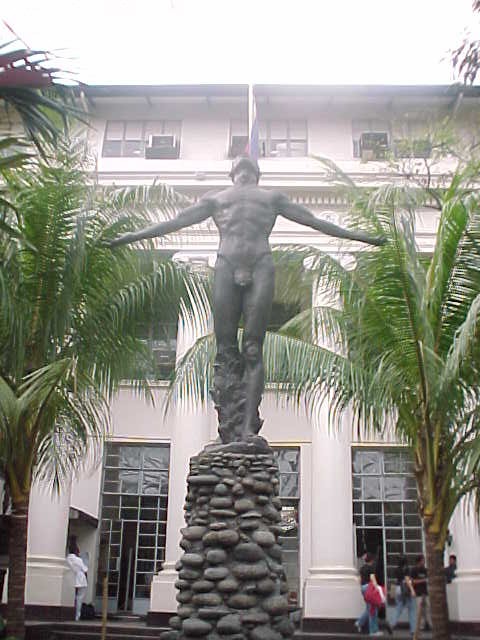
The Oblation is a landmark in every campus of the University. A statue of a naked young man with arms outstretched, hands help high, eyes closed and lips parted, the oblation serves as a symbolic gesture of offering one’s self to service to country and humanity.
The base on which it stands forms a rugged shape of the Philippine archipelago, while the big and small rocks represent the islands. At its feet are katakataka leaves, a plant which rapidly multiplies and serves as a symbol of the "undying stream of heroism in the Filipino race." The 3.5 meter height of the statue strands for the 350 years of Spanish rule in the country. the fig leaf was added to the statue upon the suggestion of then UP President Jorge Bocobo.
The Triumph of Science Over Death Statue the statue of a lady holding a torch with her two hands raised above her head is based on Jose Rizal’s sculpture and which symbolizes triumph of science over death is located in font of the College of Medicine building.